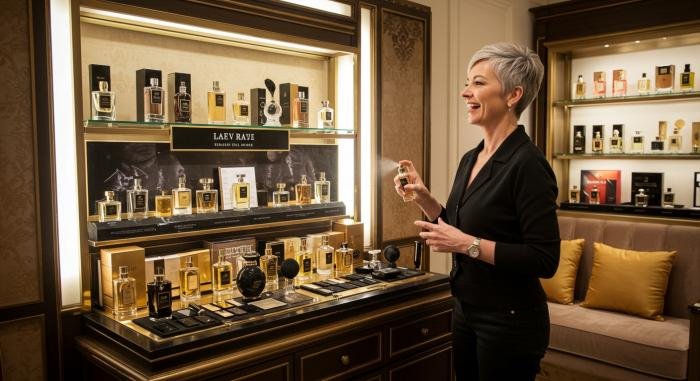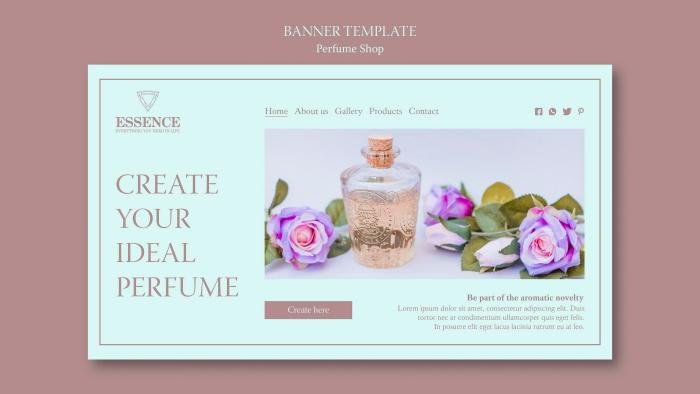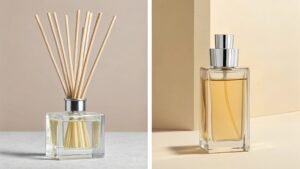The fragrance industry faces unprecedented disruption as technological breakthroughs, evolving consumer demands, and environmental pressures reshape traditional business models.
Fragrance trends 2025 will be defined by AI-powered personalization, sustainable ingredients, alcohol-free formulations, digital scent technologies, and artisanal niche perfumery driving the $52 billion global market toward unprecedented innovation and consumer-centric experiences.

Understanding these transformative trends becomes essential for industry stakeholders navigating this dynamic landscape of scent innovation and market growth.
How Is AI Transforming Personalized Fragrance Experiences?
Traditional fragrance selection remains a frustrating guessing game for consumers. Generic scents fail to capture individual preferences, leaving buyers disappointed. AI-driven perfume personalization solves this by analyzing personal data to craft unique, tailored fragrances.
AI transforms fragrance experiences by utilizing algorithmic perfumery to analyze personal preferences, lifestyle data, and scent profiles. Advanced machine learning creates custom fragrance technology that blends ingredients based on individual tastes, delivering truly personalized scent profiles.

The Technology Behind Algorithmic Perfumery
AI fragrance systems collect data through questionnaires, scent preferences, and even biometric feedback to understand individual scent profiles. Machine learning algorithms process this information alongside vast databases of fragrance molecules and aromatic compounds. The result is a sophisticated mapping system that predicts which combinations will appeal to specific users.
Leading companies like EveryHuman have pioneered AI-guided scent creation platforms that explore personalized fragrance territories previously impossible with traditional methods. These systems can analyze thousands of ingredient combinations in seconds, identifying optimal blends that match individual preferences with remarkable precision.
Market Growth and Industry Impact
The personalized fragrance AI market demonstrates explosive growth, reaching USD 1.48 billion in 2024 with a projected CAGR of 54.7%. This surge reflects consumer demand for unique, customized experiences rather than mass-market solutions.
| Market Metric | 2024 Value | Growth Rate |
|---|---|---|
| Market Size | $1.48 billion | 54.7% CAGR |
| Annual Volume Increase | 20% | Next 5 years |
| Efficacité de la production | 40% improvement | vs. traditional methods |
Custom fragrance technology enables rapid iteration and testing, reducing development time from months to weeks. Brands can now offer on-demand personalization while maintaining cost-effectiveness and sustainability through precise ingredient usage. This technological shift allows companies to differentiate through innovation rather than competing solely on established scent profiles, creating new opportunities for niche market penetration and customer loyalty.
Why Are Sustainable Ingredients Becoming Non-Negotiable?
Traditional fragrance production devastates ecosystems while consumers demand transparency. This environmental crisis forces brands to rethink ingredient sourcing or risk market irrelevance.
Sustainable fragrance ingredients are becoming non-negotiable because 73% of consumers prioritize eco-friendly products, driving the organic perfume market toward $7.5 billion by 2025. Regulatory pressure and supply chain risks make ethical perfume ingredients essential for brand survival.

Consumer Consciousness Drives Market Transformation
The shift toward sustainable fragrance reflects a fundamental change in consumer values. Modern buyers scrutinize ingredient lists with unprecedented attention, demanding transparency about sourcing practices and environmental impact. This behavioral evolution forces fragrance brands to abandon synthetic alternatives in favor of ethically sourced botanical extracts. Brand marketers tracking competitor moves notice how sustainable positioning has become a competitive advantage rather than a niche differentiator.
The fragrance sustainability practices extend beyond ingredient selection to encompass entire supply chains. Companies implementing fast production iteration capabilities must now integrate sustainability metrics into their decision-making processes. Eco-friendly scents require specialized sourcing networks that prioritize regenerative agriculture and fair trade partnerships.
Regulatory Landscape Accelerates Industry Standards
Government regulations increasingly mandate disclosure of fragrance compositions, making sustainable ingredients a compliance necessity rather than marketing choice. The European Union’s REACH regulation and similar frameworks worldwide force manufacturers to justify their ingredient selections with environmental impact assessments.
| Sustainability Factor | Traditional Impact | Alternative durable |
|---|---|---|
| Raw Material Sourcing | Synthetic chemicals | Botanical extracts |
| Production Waste | High chemical runoff | Closed-loop systems |
| Emballage | Single-use plastics | Refillable containers |
| Chaîne d'approvisionnement | Global carbon footprint | Local sourcing networks |
Scent customization capabilities now integrate sustainability requirements from the design phase, ensuring that personalized fragrances meet both consumer preferences and environmental standards.
Are Alcohol-Free Formulations the Future of Fine Fragrance?
Traditional alcohol-based perfumes dominate the market, yet consumer sensitivity and environmental concerns create significant challenges for brands seeking broader appeal.
Alcohol-free fragrances represent a growing market segment projected to reach $60.73 billion by 2025, driven by consumers with sensitive skin and preferences for natural formulations that offer gentler application experiences.

The Science Behind Alternative Perfume Bases
Water-based scents and oil-based formulations provide distinct advantages over traditional alcohol matrices. Water-based perfumes offer a more natural olfactory experience, perceived as gentler and closer to authentic fragrance molecules. Oil-based alternatives provide enhanced longevity and create intimate scent trails that develop differently on skin chemistry.
Market data reveals pricing premiums for these innovations, with water-based perfumes commanding $110-$185 per 100ml compared to conventional alternatives. This positioning reflects both production costs and consumer willingness to invest in specialized formulations.
Market Positioning and Consumer Adoption
| Formulation Type | Principaux avantages | Target Demographics | Fourchette de prix |
|---|---|---|---|
| Water-based | Sensitive skin compatibility, natural feel | Allergy sufferers, clean beauty enthusiasts | $110-$185/100ml |
| A base d'huile | Extended longevity, intimate projection | Luxury seekers, scent connoisseurs | $120-$200/100ml |
| Alcohol-free hybrid | Balanced performance, versatility | Health-conscious consumers, professionals | $95-$160/100ml |
The sensitive skin fragrances segment drives innovation in fast production iteration and scent customization capabilities. Brands leveraging these alternative bases can differentiate through targeted formulations while addressing previously underserved consumer needs. This trend aligns with broader movements toward personalized beauty solutions and sustainable ingredients.
How Are Digital Scent Technologies Reshaping Consumer Experiences?
Traditional fragrance shopping forces consumers into crowded stores with overwhelming scent combinations. Digital scent technology eliminates this friction through precision-engineered olfactory experiences.
Digital scent technology transforms consumer experiences by enabling virtual fragrance testing, personalized scent recreation, and immersive online perfume sampling through AI-powered platforms and electronic scent synthesizers.

Breaking Traditional Retail Barriers
Digital scent technology fundamentally shifts how consumers interact with fragrances. The market, valued at $1.21 billion in 2024, projects growth to $3.23 billion by 2034 as brands invest in scent recreation technology. Companies like Natura deploy MultiScent devices that reproduce odors through "dry scent" delivery, while Perfect Corp’s AI perfume generators create personalized fragrance profiles.
Virtual fragrance testing eliminates geographic constraints and hygiene concerns. Consumers access extensive fragrance libraries without physical proximity, enabling exploration of niche and premium scents previously unavailable in local markets. This accessibility particularly benefits trend analysts tracking emerging fragrance patterns across global markets.
Enhanced Personalization Through Data Analytics
Scent recreation technology leverages consumer behavior data to predict preferences and recommend complementary fragrances. AI algorithms analyze previous purchases, seasonal patterns, and demographic information to suggest personalized scent combinations. This data-driven approach enables faster product iteration and customization capabilities that traditional retail cannot match.
| Type de technologie | Bénéfice pour le consommateur | Market Impact |
|---|---|---|
| Virtual Try-On | Risk-free testing | 40% reduction in returns |
| AI Recommendations | Personalized discovery | 60% increase in cross-selling |
| Scent Synthesizers | Instant sampling | 35% faster purchase decisions |
Brand marketers gain unprecedented insights into consumer scent preferences through digital interactions. Online perfume sampling platforms capture detailed engagement metrics, informing product development cycles and inventory optimization strategies that drive competitive differentiation in saturated fragrance markets.
What Role Will Niche Perfumery Play in Defining Market Trends?
Mainstream luxury brands struggle to satisfy consumers craving authentic, exclusive experiences. Mass-market testing creates homogeneous scents that lack artistic vision.
Niche perfumery is revolutionizing fragrance trends by prioritizing artisanal craftsmanship over commercial testing. The boutique scent market drives innovation through creative freedom and exclusivity.

Creative Freedom Fuels Innovation
The niche perfumery market, projected to reach $5.4 billion by 2025, challenges traditional fragrance development. Master perfumers like Nathalie Feisthauer highlight stark differences between mainstream and indie perfume brands. While luxury conglomerates rely on focus groups and consumer testing, artisanal fragrance trends emerge from pure creative expression.
Independent perfumers experiment with unconventional materials and storytelling approaches. They craft limited-edition collections that tell personal narratives rather than appealing to mass preferences. This authenticity resonates with consumers seeking unique identity expressions through scent.
Market Influence on Luxury Brands
Established fashion houses now adapt to the boutique scent market surge. Dior’s La Collection Privée and Tom Ford’s Private Blend collections demonstrate how legacy brands balance mass-market offerings with exclusive niche-inspired lines. These premium collections command higher margins while satisfying sophisticated consumer preferences.
| Segment du marché | Growth Rate | Key Characteristics |
|---|---|---|
| Niche Perfumery | 15% annually | Artisanal, limited batches, storytelling |
| Mainstream Luxury | 3-5% annually | Consumer-tested, mass appeal, retail distribution |
| Indie Brands | 20%+ annually | Direct-to-consumer, social media-driven, customization |
The industry’s future depends on embracing niche perfumery’s innovative spirit while maintaining production capabilities for rapid market response.
Conclusion
The fragrance industry’s transformation through 2025 reflects a fundamental shift toward personalization, sustainability, and digital innovation. AI-powered customization, sustainable ingredients, alcohol-free formulations, digital scent technologies, and niche perfumery collectively redefine how consumers discover and experience fragrances. These future fragrance innovation trends demonstrate the perfume industry outlook embracing both technological advancement and artisanal authenticity. Understanding these fragrance consumer trends and scent technology development opportunities positions brands to thrive in an increasingly sophisticated and environmentally conscious marketplace where personalized experiences drive consumer loyalty.
FAQ
Q1: What are the key fragrance trends 2025 that brand marketers should track?
The key fragrance trends 2025 include personalization through AI-driven scent matching, sustainability with eco-friendly packaging and ethically sourced ingredients, alcohol-free formulations for sensitive consumers, neogourmand notes like cocoa butter and marshmallow, and hyperfruits with intense strawberry and plum profiles. These trends are driving fast production iteration cycles as brands compete to capture emerging consumer preferences.
Q2: How is personalization transforming the fragrance industry in 2025?
Personalization in fragrance trends 2025 is revolutionizing the industry through customizable scent profiles, AI-powered fragrance recommendations, and bespoke blending services. Brands are investing in scent customization capabilities that allow consumers to create unique formulations, with supply chains adapting to support small-batch production and rapid prototyping for personalized products.
Q3: Why are alcohol-free fragrances becoming a major trend in 2025?
Alcohol-free fragrances are gaining momentum in 2025 due to increased consumer awareness of skin sensitivity, religious considerations, and sustainability concerns. These formulations offer gentler application, longer-lasting scent profiles, and appeal to health-conscious consumers. The trend is driving innovation in alternative carriers and delivery systems within the fragrance industry.
Q4: What sustainability practices are shaping fragrance trends 2025?
Sustainability in fragrance trends 2025 encompasses biodegradable packaging, carbon-neutral production processes, ethically sourced natural ingredients, and refillable containers. Brands are implementing circular economy principles, reducing water usage in manufacturing, and partnering with sustainable ingredient suppliers to meet growing consumer demand for environmentally responsible products.
Q5: How are fragrance brands adapting their supply chains for 2025 trends?
Fragrance brands are restructuring supply chains for 2025 by implementing fast production iteration cycles, developing scent customization capabilities, and creating agile manufacturing systems. This includes investment in small-batch production technology, direct-to-consumer delivery models, and real-time trend analysis tools to quickly respond to emerging market preferences and competitor moves.
- FragranceX – 2025 Fragrance Trends Market Analysis
- Allure – Expert Predictions for Fragrance Trends 2025
- Mintel – Global Fragrance Industry Insights and Forecasts 2025
- Euromonitor International – Beauty and Personal Care Trends Report 2025
- Trendalytics – Real-Time Fragrance Consumer Behavior Analytics




